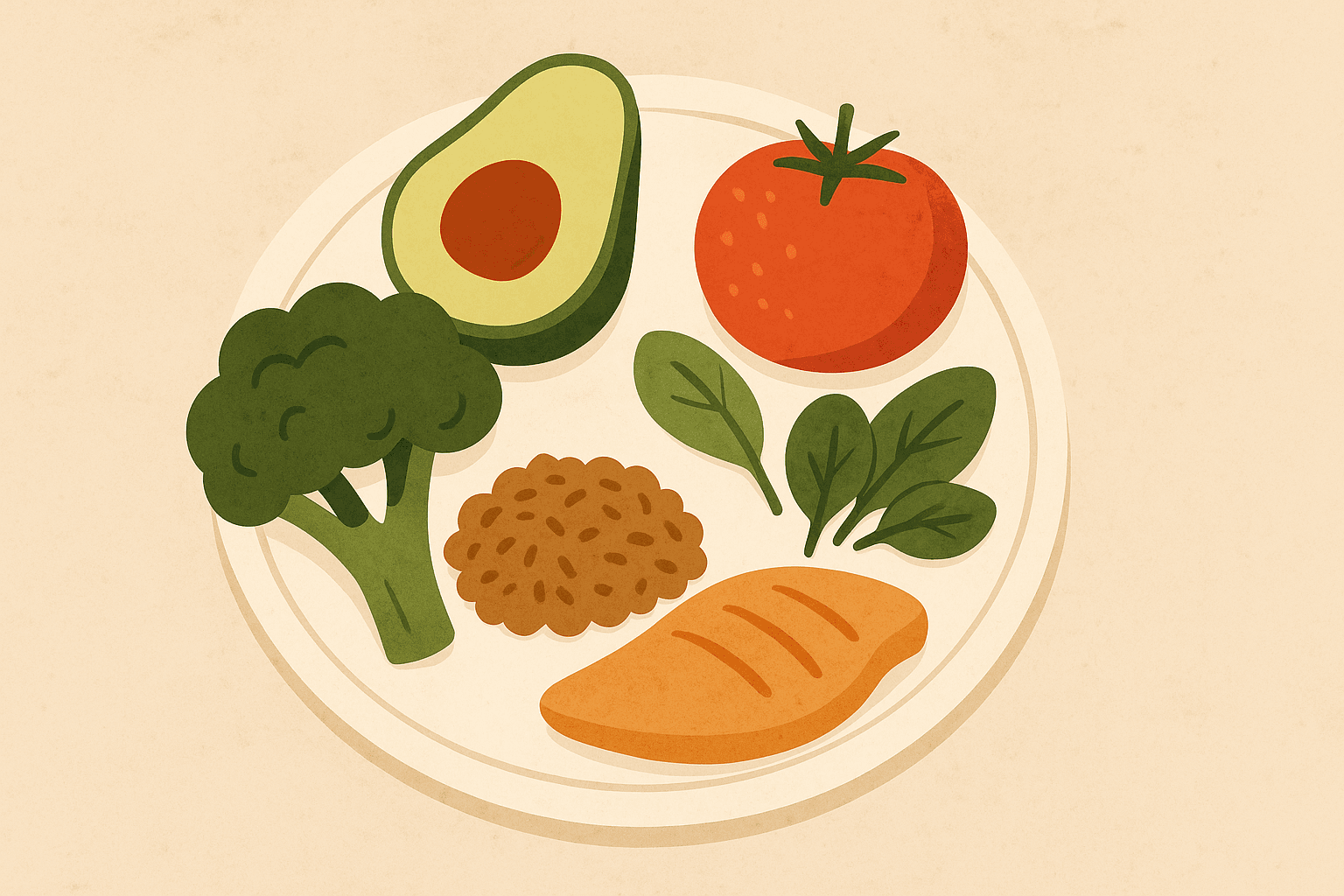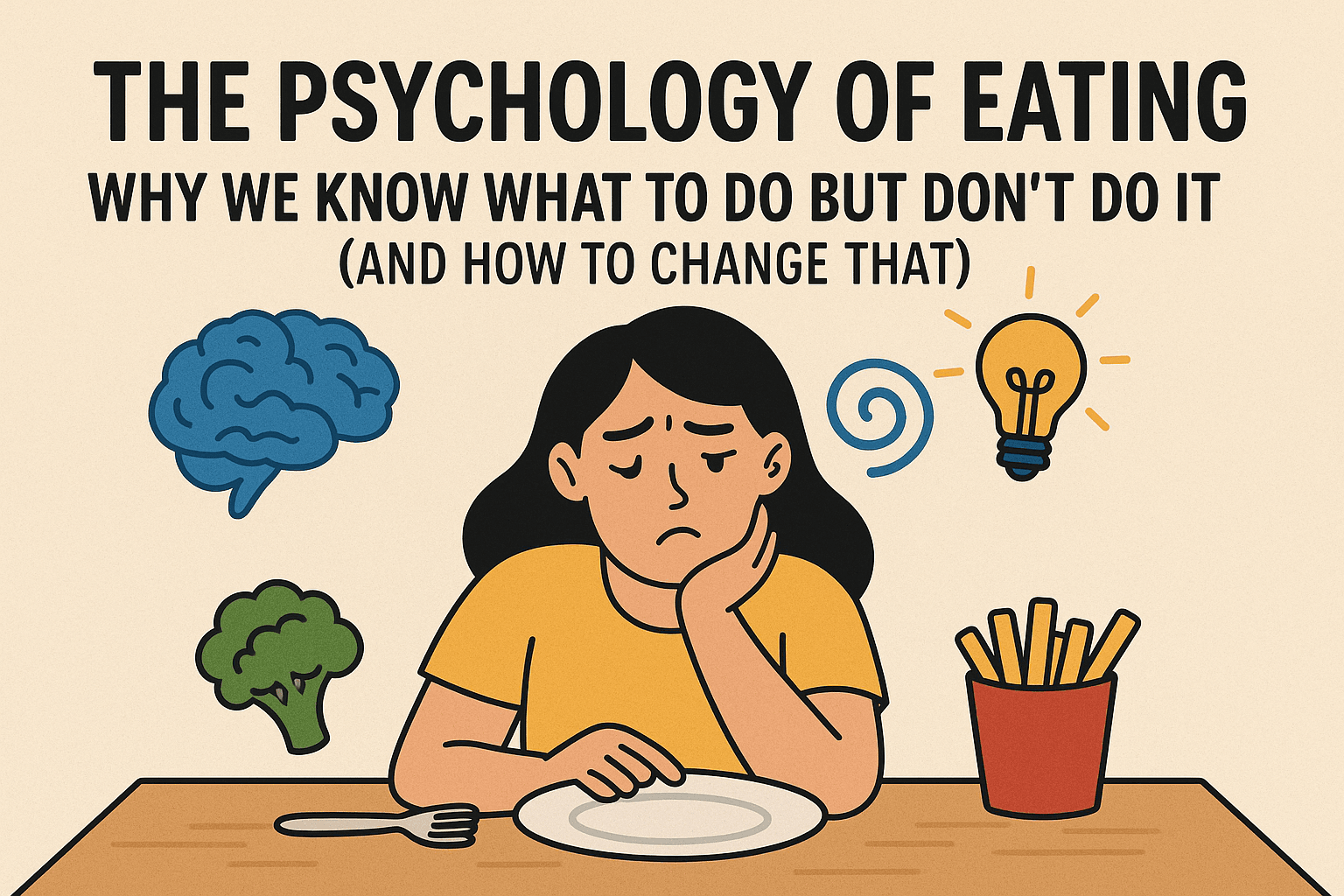Back to Basics: What Healthy Eating Really Looks Like (and Why Most of Us Get It Wrong)
Published on June 11, 2025

Healthy eating isn’t about powders, fads, or perfection. It’s about consistency, balance, and tuning into your body’s needs. This guide cuts through the noise and brings you back to the basics — real food, real habits, real results.
The Foundation: Quality Over Quantity
Calories matter — but nutrient quality matters more. Two 500-calorie meals can have very different impacts on energy, mood, and metabolism.
Focus on:
Leafy greens (spinach, kale, arugula)
Cruciferous vegetables (broccoli, cauliflower, cabbage)
Whole grains (quinoa, oats, brown rice)
Pulses (lentils, beans, chickpeas)
Healthy fats (avocados, nuts, olive oil)
Lean protein (chicken, tofu, eggs, tuna)
Low-sugar fruits (berries, citrus, apples)
Avoid:
Ultra-processed foods with long ingredient lists
White bread, pastries, sugary cereals
Trans fats (usually in fried foods and packaged snacks)
Do This: Color your meals — vibrant foods = antioxidants, fiber, and phytonutrients.
Moderation Over Restriction
All macronutrients have their place. Carbs, fats, and proteins work together to stabilize blood sugar, improve satiety, and ensure nutrient diversity.
Balanced plate formula:
½ non-starchy vegetables
¼ protein
¼ complex carbs
Drizzle of healthy fat
Example: Grilled salmon + roasted sweet potato + sautéed spinach + olive oil
Pro Tip: Consistency trumps perfection. One “off” meal doesn’t break progress — habits do.
Quick Fix: Frozen veggies and pre-cooked grains save time without sacrificing nutrition.
How You Eat Matters Too
Mindful eating enhances digestion and prevents overeating.
Simple practices:
Lay down your fork between bites
Take 2 deep breaths before eating
Chew each bite 15–20 times
Stop at 80% full (a Japanese principle of “hara hachi bu”)
Try This: Eat one meal a day in silence — rediscover taste, texture, and satisfaction.
Evening Habit: Reflect on meals in a food/mood journal for long-term insight.
Rethink Snacks: Make Them Work for You
We often snack from boredom or stress. Choose nutrient-dense mini-meals.
Better snack combos:
Apple + almond butter
Carrot sticks + hummus
Greek yogurt + chia seeds
Cottage cheese + berries
Hard-boiled egg + ½ slice avocado toast
Avoid:
Granola bars
Chips, cookies
Sweet coffee drinks
Soda, energy drinks
Snack Prep: Portion snacks into containers to avoid mindless eating.
Tip: Designate a visible snack drawer for healthy grab-and-go options.
Water: The Unsung Hero
Hydration fuels focus, energy, and metabolism. Sugary beverages undo all that good.
Goal: 8–10 cups per day
Instead of soda:
Sparkling water with lime
Unsweetened iced tea
Cucumber or mint-infused water
Hydration hacks:
Morning glass of water
Keep a bottle nearby
Drink herbal teas in winter
Set hourly reminders
Bonus Tip: Post-workout? Add sea salt or lemon to water for natural electrolytes.
Grocery Shopping Like a Pro
Your kitchen is your best defense.
Smart shopping habits:
Start with the store’s outer edges
Never shop hungry
Stick to your list
Read ingredients (not just calories)
Pantry essentials:
Oats, brown rice, quinoa
Canned beans, tuna, salmon
Olive oil, vinegar, spices
Tomato paste, coconut milk, frozen berries
Nuts, seeds, dried herbs
Upgrade Slowly: Replace pantry items one at a time as they run out.
Set the Scene: Keep healthy snacks visible — hide (or avoid buying) the junk.
Final Thoughts
Healthy eating isn’t a destination — it’s a direction.
Start small: one more veggie, one more home-cooked meal, one more glass of water.
These steps add up. Over time, they create a lifestyle shift — not a short-term fix.
Real food. Real intention. Real life.
You don’t need a detox. You need simplicity. You need care.
Healthy eating is permission to thrive — not a punishment.
Eat like you mean it. Shop with purpose. Live fully. Your body will thank you.








